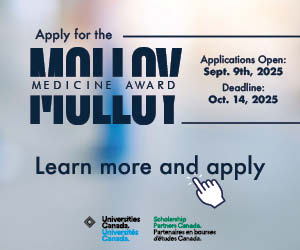A quick shave for your grant proposal: cutting your word count in page-limited texts
By cutting words like ‘is’ and ‘very’, you’ll be able to significantly reduce your word count.

Question:
“It’s a nightmare trying to fit my grant proposal within SSHRC’s six-page limit. I know that your business is called writing short is hard — so, do you have any suggestions for researchers trying to write short?”
– Anonymous, Asian Studies
Answer:
Who is the source of that oft-cited aphorism that goes something like, “I’m sorry this letter is so long; I didn’t have enough time to make it shorter”? (Wikipedia suggests Blaise Pascal, but I never know if I can trust quote attributions I find online!)
Writing short in grant applications can be exceptionally hard. There are a few well-known tricks, like eliminating every instance of “I believe that” and changing every “way(s) in which” to “way” or “how,” depending on context. But those changes don’t offer the same return on your investment of time as my two favourite quick tips:
-
Cut “is”
This is a writing problem that is easy to correct. (10 words)
This writing problem is easy to correct. (7 words)
When editing your draft, search for the word “is.” In the two sentences above, searching for “is” and rephrasing the sentence enabled the writer to cut 30 per cent of the original word count without losing any of the original sentence’s meaning.
I recommend cutting “is” as much as possible, because “is” is a symptom of loose writing. Where “is” appears, other inefficient, wordy constructions often follow. “Is” works well at the draft phase of the writing process. It’s also a great choice when you want to define something (as in, for example, “‘Is’ is a symptom of loose writing”). But it rarely belongs in the final, polished draft.
In short: “is” presents an opportunity for revision. And so do its friends “are,” “was,” and “were.”
For example, in the sentence The function of this department is the collection of accounts, we can get rid of the “is” by replacing it with “collecting”: This department collects accounts. Similarly:
- The current focus of the medical profession is disease prevention. (10 words)
becomes:
Currently, the medical profession focuses on disease prevention. (8 words) - Our intention is to investigate the prevalence of this trend among our selected population. (14 words)
becomes:
We will investigate the trend’s prevalence. (6 words)
In each of these examples, I look for another word that is already in the sentence, and I turn it into the new main verb.
You’ll notice in the second example above that I have not limited my revisions to just the verb “is”. Because “is” serves as a symptom of loose, baggy writing, I encourage you to look at the entire sentence that surrounds that verb to see if there are other places where you can tighten up your phrasing.
While this may look like a labour-intensive process, cutting “is” as much as possible can shave a significant percentage of your word count over the course of an entire document, with minimal if any changes to the meaning of your text. Even if it only cuts your word count by three per cent, over the course of a detailed description, that three per cent is about 100 words — and that’s six lines of text gone, with no change at all to the content of your proposal.
I designed writingwellishard.com to highlight all the “to be” verbs in your text in blue. These words are symptoms of wordiness. (Note: writingwellishard.com isn’t AI, and it doesn’t bank your text in any back-end database, because I have neither the interest nor the inclination to keep track of your writing!)
-
Cut “very”
I cut almost every “very,” “highly,” “significantly” and “importantly.” I do this to try to save a line of text in a single paragraph, but I also do it because intensifiers — the adverbs and adjectives that writers include to add force to their expression — don’t have the effect that some writers imagine they might.
Take these two examples:
- Dave is a trustworthy employee.
- Dave is a really trustworthy employee.
In which of these examples might a reader be left wondering if Dave will be pocketing staplers on the way out the door?
When we’re talking about Dave’s trustworthiness, adding the intensifier “really” turns “trustworthy” from a simple binary (either Dave can be trusted or he can’t) into a spectrum: if Dave is “really” trustworthy, does that mean there are other employees who might be “very” trustworthy, or “quite” trustworthy, or “outrageously” trustworthy? How does Dave compare to these other folks?
Being trustworthy thus moves from an absolute quality into a characteristic that varies by degrees. The intensifier introduces a shade of grey, and with it, the possibility of doubt.
That’s why calling your recent coup a “prestigious award” is not an effective strategy if you want to persuade your reader of the truth of your claims.
Two options that are preferable to these grey-inducing intensifiers:
- cut the descriptive term; or
- replace the description with something quantifiable.
Don’t tell us that your trainee is “highly prolific”: tell us that they have co-authored more publications than any trainee you have supervised in your 15 years at U of X, or that they submitted N manuscripts last year, or that they spoke at # international conferences and are now writing up their results for submission. Replace the generic, grey description with some concrete evidence.
OK, so I am suggesting adding more words, for which I apologize. But the words I’m suggesting adding are better, clearer, more concrete. If you don’t have the word count to provide that kind of evidence, then, just cut the “very.”
By cutting “is” and “very” and words like them, you’ll be able to both substantially shave your word count and also make your writing more clear, more precise, and thus more persuasive.
Featured Jobs
- Political Science - Assistant Professor (Political Theory)Saint Mary's University
- Psychology - Assistant Professor (Clinical Psychology)Queen's University
- Canadian Politics - Assistant ProfessorUniversity of Toronto
- Science - Assistant Professor (Teaching)The University of British Columbia
- Chaire de recherche du Canada, niveau 2 sur l'inclusion dans l'éducation de la petite enfanceUniversité du Québec à Trois-Rivières (UQTR)
















Post a comment
University Affairs moderates all comments according to the following guidelines. If approved, comments generally appear within one business day. We may republish particularly insightful remarks in our print edition or elsewhere.
3 Comments
Great advice for one of the most common problems in grant writing!
Excellent advice!
Kudos on your “Quick Shave” article. In addition to your guidance on writing concisely, you also illustrated its contribution to writing persuasively: quantify. Reviewers are convinced by evidence not unsubstantiated declaration.